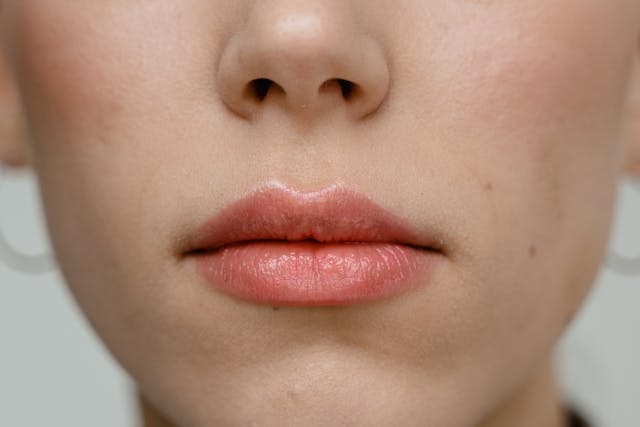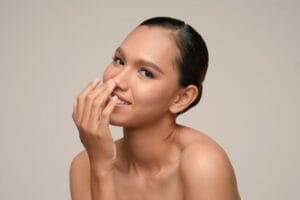Rhinoplasty Expectations: Your Complete Recovery & Results Guide
Quick Answer: Rhinoplasty expectations should include significant swelling for 2-3 weeks, gradual improvements over 6-12 months, and final results visible after 12-18 months. Expect bruising, numbness, breathing changes, and emotional ups and downs during recovery. Realistic expectations are essential for satisfaction with your nose surgery outcome.
Sarah stared at her reflection three weeks after surgery, fighting back tears. Her nose looked nothing like the refined result she’d imagined—it was swollen, the tip seemed bulbous, and subtle asymmetries made her question everything. Her surgeon calmly reminded her: “You’re right on schedule. This is completely normal.” That conversation changed her perspective entirely.
Setting realistic rhinoplasty expectations might be the most crucial—yet overlooked—aspect of the entire surgical process. The gap between what patients envision on day one versus what actually unfolds over the following year can be vast. And here’s the thing: most people simply don’t realize how gradual and nuanced rhinoplasty recovery truly is.
Understanding what to genuinely expect during your rhinoplasty journey—from that first post-operative glimpse to your final aesthetic outcome—can mean the difference between confident patience and unnecessary anxiety. Let me walk you through the realistic timeline, the challenges you’ll likely face, and what experienced surgeons wish every patient knew before going under anesthesia.
Understanding Realistic Rhinoplasty Expectations
The disconnect between expectation and reality in rhinoplasty often starts before surgery even happens. Patients scroll through before-and-after galleries, fixate on celebrity noses, or bring in digitally altered photos that may not even be surgically achievable on their facial structure. That makes things complicated.
Your rhinoplasty expectations need to be grounded in your unique anatomy—not someone else’s results. Skin thickness, cartilage strength, bone structure, healing capacity, and even ethnicity all play massive roles in what’s realistically possible. A skilled surgeon can refine, reshape, and enhance your nose, but they’re working within the constraints of your individual biology.
In my research of patient outcomes and surgical literature published by the National Institutes of Health, one pattern emerges consistently: patients with realistic, well-informed expectations report significantly higher satisfaction rates than those who expected perfection or dramatic transformation overnight.
Rhinoplasty Expectations: What Makes Expectations “Realistic”?
Realistic expectations acknowledge several fundamental truths about rhinoplasty:
- Recovery is lengthy and non-linear — You won’t see your final nose for at least a year, possibly longer depending on skin thickness and surgical complexity
- Swelling fluctuates unpredictably — Some days your nose looks better than others, especially in the first three to six months
- Minor asymmetries are normal — Perfect symmetry doesn’t exist in nature, and trying to achieve it surgically often creates an unnatural appearance
- Revision may be necessary — Even in the most skilled hands, roughly 10-15% of rhinoplasties require minor refinements
- Your nose will change as you age — Rhinoplasty doesn’t stop the natural aging process; tissues will continue evolving over decades
But here’s what often surprises people: setting realistic rhinoplasty expectations doesn’t mean settling for mediocre results. It means understanding the journey you’re about to embark on so you can navigate it with confidence rather than constant worry.
The Rhinoplasty Recovery Timeline: What Really Happens
Let’s talk about what your recovery will actually look like—not the sanitized version, but the real, day-by-day experience that shapes your rhinoplasty expectations.
Week 1: The Initial Shock Period
The first week is rough. There’s no sugarcoating it. You’ll have a splint on your nose, likely internal packing or splints, significant swelling around your nose and eyes, and bruising that can look downright alarming. Many patients report they look worse than they anticipated.
During this phase, breathing through your mouth becomes your reality. Sleep is challenging—you need to stay elevated, which isn’t comfortable. You might experience numbness across your nose and upper lip that feels distinctly odd. Pain is typically manageable with prescribed medications, though discomfort and pressure are constant companions.
The catch? You can’t really judge anything about your results yet. Your nose is so swollen that its shape bears little resemblance to what it will ultimately become. This is where realistic rhinoplasty expectations become crucial—understanding that this is temporary helps immensely.
Weeks 2-3: The Reveal and Reality Check
When that cast comes off around day 7-10, expect mixed emotions. Your nose will still be quite swollen—often appearing larger than before surgery. The tip might look bulky or upturned. You might notice asymmetries that weren’t there before. This phase challenges many patients’ expectations.
Bruising typically fades significantly by week two, transitioning from dark purple to yellowish-green before disappearing. You can usually return to work or school with makeup covering any remaining discoloration. But your nose? Still not remotely close to its final form.
According to the American Society of Plastic Surgeons, approximately 80% of visible swelling resolves in the first three weeks—but that remaining 20% takes months to fully dissipate and makes all the difference in your final aesthetic outcome.
Months 1-3: Patience Becomes Essential
This is often the most psychologically challenging period for maintaining realistic rhinoplasty expectations. You’re back to normal activities, the obvious signs of surgery have faded, but your nose still doesn’t look quite right. The tip remains somewhat swollen and poorly defined. You might notice it looks different at different times of day, better in the morning and more swollen by evening.
During this phase, many patients experience what I call “expectation fatigue”—the exhausting mental process of constantly analyzing their nose and comparing it to their pre-surgery vision. That said, week by week, subtle improvements do occur. The bridge becomes more refined. The profile starts resembling what you discussed with your surgeon. Your breathing, if that was necessary, typically improves significantly.
Months 3-6: Seeing the Light
Around the three-month mark, most patients start feeling genuinely positive about their results. The major swelling has subsided enough that your nose shape becomes clearer. You can appreciate the changes your surgeon made. Friends and family start commenting—usually positively—on your appearance.
But—and this is important for setting proper rhinoplasty expectations—you’re still not seeing the final result. The tip remains slightly swollen, particularly if you have thick skin. Minor irregularities might still be visible. Some asymmetry may persist. Surgeons typically ask patients to wait until at least the six-month mark before making any judgments about potential revision needs.
Months 6-12: The Final Refinement Phase
Between six months and one year, the subtle magic happens. Swelling in the nasal tip gradually resolves, revealing the refined definition your surgeon created. The skin continues to contract and redrape over your new nasal structure. Small asymmetries often self-correct as tissues settle into their final positions.
This is when rhinoplasty expectations finally align with reality for most patients. You see the nose you envisioned—or something very close to it. Your breathing feels normal (or better than before, if your surgeon made functional improvements). The nose looks natural, not “done.” It harmonizes with your other facial features rather than dominating your appearance.
12-18 Months: The True Final Result
Though most visible changes complete by one year, complete resolution of all swelling—particularly in patients with thick nasal skin or those who underwent extensive tip work—can take up to 18 months. This extended timeline should absolutely be part of your rhinoplasty expectations from the beginning.
Here’s what many patients don’t realize: even after the swelling fully resolves, your nose will continue to mature and settle for several years. Minor changes in tip projection or definition can occur. This is normal tissue settling, not surgical failure.
Common Surprises That Challenge Rhinoplasty Expectations
Even with thorough pre-operative counseling, certain aspects of rhinoplasty recovery consistently surprise patients. Being aware of these beforehand helps calibrate your expectations appropriately.
Rhinoplasty Expectations: Breathing Changes and Nasal Congestion
Many patients expect breathing difficulties immediately after surgery—that’s obvious given the swelling and internal splints. What surprises them is that breathing can feel “off” for weeks or even months afterward. Internal swelling takes time to resolve. Scar tissue forms and then softens. The nasal passages adjust to their new configuration.
Some patients also experience what feels like chronic congestion even when they’re not actually congested—this is due to altered airflow patterns in the newly shaped nasal passages. Your brain and body need time to adapt. In cases where septoplasty or turbinate reduction was performed alongside cosmetic rhinoplasty, these sensations can be more pronounced.
Numbness and Altered Sensation
Expect your nose and sometimes your upper lip and teeth to feel numb or tingly for months. This happens because small sensory nerves are inevitably disrupted during surgery. The sensation gradually returns, but it’s a slow process. Some patients report residual numbness in the nasal tip lasting up to a year or more—though this varies considerably by individual.
What often catches people off guard is how disconcerting this numbness feels. You touch your nose and it doesn’t feel like your nose. You have an itch you can’t properly scratch. These sensations resolve with time, but they can be psychologically challenging in the interim.
Rhinoplasty Expectations: Emotional Roller Coaster
Perhaps the most underestimated aspect of rhinoplasty expectations is the emotional journey. It’s completely normal to experience periods of regret, anxiety, or even mild depression during recovery—especially in those first few challenging weeks.
Seeing yourself look different (even if it’s the change you wanted) requires psychological adjustment. Some patients go through a period of what psychologists call “identity adjustment”—your face has changed, and that affects how you see yourself and how you think others perceive you.
The day-to-day fluctuations in appearance due to swelling can also be emotionally draining. One day your nose looks great; the next it seems swollen again. This unpredictability tests patience and can make you question whether the surgery was successful.
Social Situations and Reactions
How people react to your rhinoplasty can significantly impact your experience. Some patients prefer to be open about their surgery; others keep it private. Either approach has challenges.
If you’re open about it, you might face unsolicited opinions—some supportive, others critical. People might scrutinize your healing nose more than you’d like. Conversely, if you keep it private, you’ll need to navigate questions about bruising or changes in your appearance without revealing you had surgery.
Most interestingly, many patients are surprised when people don’t notice their rhinoplasty at all—even significant changes. This happens because well-executed rhinoplasty creates harmony rather than drawing attention. It’s actually a sign of excellent results, though it can feel anticlimactic when you’ve been so focused on the change.
Factors That Influence Your Rhinoplasty Outcome
Your individual rhinoplasty expectations should account for several personal factors that dramatically influence your surgical outcome and recovery experience.
Rhinoplasty Expectations: Skin Thickness and Quality
This might be the single most important factor affecting your results—and it’s completely beyond your control. Patients with thin skin see results more quickly and typically achieve more refined definition, particularly in the nasal tip. However, thin skin also shows irregularities more readily.
Thick skin, conversely, takes much longer to contract and redrape over the new nasal framework. Swelling persists longer—sometimes up to two years. Achieving sharp tip definition is more challenging. But thick skin also conceals minor irregularities that would be visible with thinner skin.
Your surgeon should discuss your skin characteristics during consultation and adjust your rhinoplasty expectations accordingly. This conversation is crucial for avoiding disappointment later.
Surgical Complexity and Technique
A minor hump reduction with minimal tip refinement recovers much faster and more predictably than complex revision rhinoplasty requiring cartilage grafting. Your expectations should scale with the complexity of your procedure.
The surgical approach also matters. Open rhinoplasty (where an incision is made across the columella) typically involves more swelling and a longer recovery than closed rhinoplasty, though it allows greater surgical precision for complex cases. Your surgeon will explain which approach they recommend and why.
Age and Overall Health
Younger patients generally heal faster and more predictably than older patients. If you’re having rhinoplasty in your late teens or twenties, your expectations for recovery speed can be slightly more optimistic than if you’re in your fifties or sixties.
Overall health status matters too. Smokers face significantly higher complication risks and slower healing—most surgeons require smoking cessation for several weeks before and after surgery. Certain medical conditions, medications, or nutritional deficiencies can also impact healing and should be discussed thoroughly during consultation.
Following Post-Operative Instructions
This is the one factor entirely within your control that massively affects whether your results meet your rhinoplasty expectations. Following your surgeon’s post-operative instructions isn’t optional—it’s essential.
Keeping your head elevated, avoiding strenuous activity, not blowing your nose, protecting your nose from sun exposure, attending all follow-up appointments—these seemingly small things collectively make a huge difference in your outcome.
Patients who diligently follow instructions typically heal more smoothly, with fewer complications and better results than those who rush back to normal activities or skip precautions.
Setting Expectations: The Consultation Process
The foundation for realistic rhinoplasty expectations gets built during your consultation—or it should, if you’re working with the right surgeon.
A quality consultation involves far more than pointing at photos of noses you like. Your surgeon should perform a thorough nasal examination, assess your skin quality and bone structure, discuss your breathing function, review your medical history, and—critically—understand your motivations and aesthetic goals.
This is also when computer imaging becomes valuable. While imaging isn’t a guarantee of your outcome, it provides a visual framework for discussion. You and your surgeon can align on what’s realistically achievable given your anatomy. Research published in the Journal of Plastic and Reconstructive Surgery indicates that patients who undergo imaging sessions typically report more realistic expectations and higher satisfaction rates.
Don’t hesitate to ask direct questions during consultation:
- What concerns you about my nose or my expectations?
- What limitations does my anatomy present?
- What’s the realistic timeline for seeing my final results given my skin type?
- What complications should I specifically be aware of?
- What percentage of your rhinoplasty patients require revision, and why?
- Can I see before-and-after photos of patients with similar nose types to mine?
A surgeon who takes time to thoroughly answer these questions and temper unrealistic expectations—even if it means potentially losing your business—is one worth trusting with your face.
When Results Don’t Meet Expectations: Revision Rhinoplasty
Despite best efforts, sometimes results don’t align with expectations. This is a reality of rhinoplasty that should be acknowledged upfront.
Revision rhinoplasty—a secondary surgery to refine or correct issues from the initial procedure—occurs in roughly 10-15% of cases, though rates vary by surgeon skill level and case complexity. Sometimes revisions address genuine surgical imperfections. Other times they’re sought because a patient’s expectations evolved after seeing their initial results.
It’s crucial to understand that revision rhinoplasty is technically more challenging than primary surgery. Scar tissue complicates dissection. Structural support may be compromised. Available cartilage for grafting may be limited. Recovery can be more uncomfortable, and results less predictable.
Most reputable surgeons require waiting at least 12 months before considering revision—and for good reason. What looks like an asymmetry at six months might resolve completely by 12 months. That slightly upturned tip might drop to perfect position as swelling finally resolves. Patience often prevents unnecessary additional surgery.
However, if genuine issues exist after complete healing—significant asymmetry, breathing problems, structural collapse, or results dramatically different from what was discussed—revision becomes appropriate. Choose your revision surgeon carefully; this is often best performed by someone with extensive revision experience, which may or may not be your original surgeon.
Managing Rhinoplasty Expectations: Practical Strategies
So how do you actually maintain realistic expectations through the challenging recovery process? Here are strategies that patients and surgeons alike recommend:
Document Your Journey
Take photos weekly (same lighting, same angle). Looking back at week two when you’re at week eight provides tangible evidence of progress that’s hard to perceive day-to-day. Many patients report this practice helped them maintain perspective during difficult phases.
Limit Mirror Time
This sounds counterintuitive, but excessive mirror scrutiny fuels anxiety rather than providing useful information. Set specific times to check your progress rather than constantly analyzing every angle. Your nose is changing; obsessive monitoring won’t speed the process.
Avoid Social Media Comparison
Instagram and other platforms showcase highly filtered, perfectly timed, often edited rhinoplasty results—frequently at the exact moment of optimal lighting and minimal swelling. These images create unrealistic benchmarks that damage your mental health and perspective.
Rhinoplasty Expectations: Trust the Process
If you selected a qualified, board-certified surgeon and they tell you everything is progressing normally, believe them. They’ve seen hundreds or thousands of rhinoplasties heal. You’ve seen one: yours. Their perspective is more reliable than your anxious mirror scrutiny.
Communicate with Your Surgeon
Don’t suffer in silence if you have concerns. Reach out to your surgeon’s office. Most concerns can be addressed quickly with reassurance or a brief exam. That’s what post-operative care is for—use it.
Connect with Others
Online rhinoplasty forums and support groups can be helpful (though take individual experiences with appropriate skepticism). Knowing others went through similar phases of doubt and came out satisfied on the other side provides valuable perspective.
The Bottom Line on Rhinoplasty Expectations
Walking into rhinoplasty with eyes wide open—understanding the lengthy recovery, the emotional challenges, the inevitable swelling fluctuations, and the gradual nature of healing—dramatically increases your likelihood of feeling satisfied with your outcome.
Your rhinoplasty expectations should balance optimism about improvement with patience for the process and acceptance of your unique anatomical limitations. The goal isn’t perfection; it’s harmony. Not a celebrity nose transplanted onto your face, but your nose refined and enhanced to better suit your features.
Most patients who set realistic expectations and give their bodies adequate time to heal report they’d do it again in a heartbeat. The temporary discomfort and anxiety fade. What remains is a nose that feels right—often so natural that even you sometimes forget it was ever different.
That initial post-operative doubt Sarah experienced? It dissolved completely by month nine. Her nose settled beautifully, exactly as her surgeon predicted it would. She recently told me the best advice she received was this: “Don’t judge your nose until it’s done judging itself.” That wisdom reflects perhaps the most important rhinoplasty expectation of all—patience yields results, but only if you give healing the time it genuinely requires.
Whether you’re still researching, scheduled for surgery, or currently in recovery, remember that managing expectations isn’t about lowering your hopes—it’s about aligning them with the biological reality of how bodies heal. That alignment is what transforms surgical success into genuine satisfaction.














Post Comment